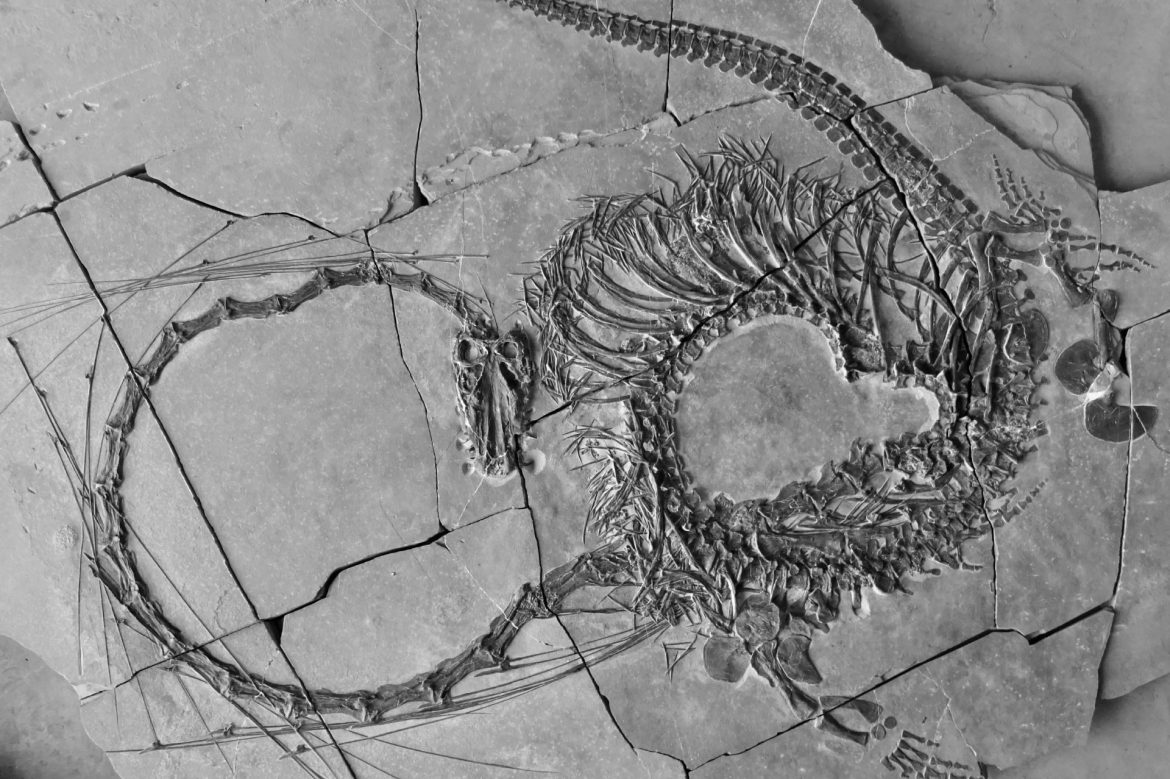
An Extraordinary Sea Reptile
Scientists are making new discoveries every day, and among the most remarkable are undoubtedly the fossils of creatures that lived millions of years ago. These fossils, which have endured the passage of time and survived to the present day, provide us insight into millions of years of life on our planet.
A recent study unveiled the selective diet of a young Tyrannosaurus that lived 75 million years ago. This discovery, where the stomach contents of the well-preserved young dinosaur contained hind legs of two different baby dinosaurs, offers a unique glimpse into past eating habits through fossils.
Published last February in the Transactions of the Royal Society of Edinburgh, another study delves even further back, to 240 million years ago, examining a peculiar marine reptile! Initially named in 2003, the fossils of Dinocephalosaurus orientalis were unearthed in Guizhou Province, southern China, and meticulously studied by an international team for a decade.
The most intriguing feature of Dinocephalosaurus is undoubtedly its remarkably long neck. As per measurements derived from a well-preserved fossil, the total length of this marine reptile spans 510 cm, with the neck alone measuring an impressive 234 cm! For those who are curious about other measurements; its skull was measured 16 cm, the body 100 cm, and the tail 160 cm.
Researchers suggest that Dinocephalosaurus, which could grow up to about 6 meters in length, once roamed and hunted in the Triassic seas and even gave birth in the sea. Its paddle-like limbs and the preserved fish remains in its stomach strongly indicate a full adaptation to marine life.
Dinocephalosaurus orientalis is notable for its resemblance to another “long-necked” marine reptile, Tanystropheus hydroides, who had 13 hyper-extended cervical vertebrae. In comparison, D. orientalis has 32. This long neck likely enabled it to reach crevices while hunting underwater. Despite their anatomical similarities and similarly long necks, the two creatures were not closely related. The reason for long necks in two different reptiles is convergent evolution.
The research team underscores the importance of the remarkably well-preserved fossil material, noting that the species is one of the most detailed examples described from the Triassic period to date.
The discovery of the fossil remains of Dinocephalosaurus orientalis expands the boundaries of scientific knowledge and ignites our passion for unlocking the secrets deep within nature. The journey of this unique marine reptile transports us back millions of years, stimulating our imagination and aiding our exploration of the extraordinary adaptive capabilities of evolutionary mechanisms. The efforts of scientists bring traces of the past into the present, transforming it into an adventure that captivates us and stirs our curiosity for future discoveries!
REFERENCES
- 1. https://www.cambridge.org/core/journals/earth-and-environmental-science-transactions-of-royal-society-of-edinburgh/article/dinocephalosaurus-orientalis-li-2003-a-remarkable-marine-archosauromorph-from-the-middle-triassic-of-southwestern-china/C7D48539139475EFCAAC35342089ACB8
- 2. https://www.bbc.com/news/science-environment-68374520
- 3. https://en.wikipedia.org/wiki/Dinocephalosaurus
